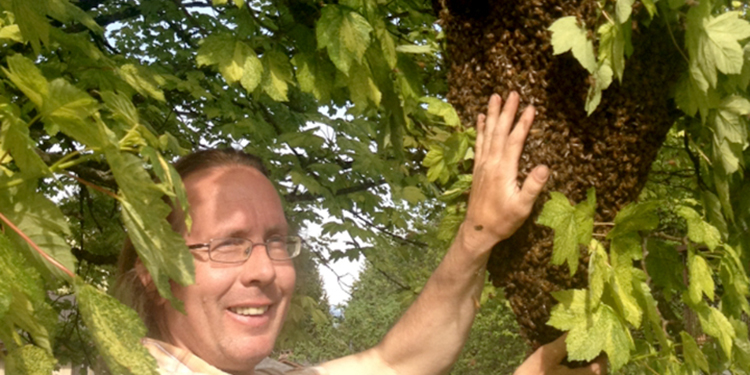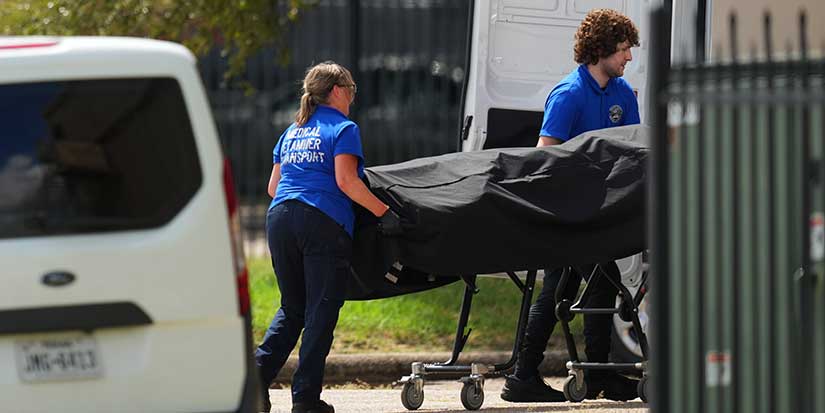Latest News
Bee whisperer, at your service
Published 2:47 PST, Tue January 15, 2019
Last Updated: 2:12 PDT, Wed May 12, 2021
If you find a swarm of bees, don’t attack,
kill or spray it.
Text Bill Picha (pronounced “peekah”) at
604-644-9491 to have him come gather up your errant bees, be they in a tree, a
wall, an attic or on a roof.
There is no charge for his services.
“An exterminator can lose his license (for
killing a swarm of bees),” Picha says. “They often call me, charge the customer
for the service, and I come take the bees for free.”
If you can’t get hold of him, you can check
out this link to reach out to other beekeepers who
will come retrieve your new-found swarm.
While an exterminator costs money, Picha and
the members of the Richmond Beekeepers Association will come get the colony for
free. As an added benefit, they don’t use chemicals in your garden or house as
they gather up the house-hunting bees.
According to master beekeeper and UBC
Botanical Garden’s official beeologist, Brian Campbell, humans depend on bees
for one out of every three bites of food we take. The honey is almost a
byproduct of their ability to fertilize the fruits and vegetables we eat.
Picha says the bees he gathers end up in
hives on his U-Pick blueberry farm and orchard near Watermania, where the
multiple bee visits to the blossoms result in large, well-shaped produce for
those with a penchant for picking.
“Some flowers are not pollinated by bees
carrying the pollen on their legs. Some are pollinated by buzz pollination. A
bee, that buzzes in the right tone, will shake the pollen off the stamens. Some
flowers are built in such a way that their internal pollen only falls if the sound
is right.”
That means the tomatoes grown in greenhouses
need special non-native bees brought into our area, ones that buzz at the right
frequency. They occasionally get out the vents in some greenhouses. If you have
ever seen a different-looking bumble bee, it might have been one of these
imported, fuzzy workers that can hum in the right pitch to pollinate hot house
tomatoes.
By day, Jean Stewart works at Pacific Book
Bindery, but when she goes home, she doffs her work duds and puts on her
beekeeper’s outfit.
A member of the Richmond Beekeepers
Association, Stewart describes the annual life of a colony of honey bees.
“They are not really dormant (during the cold
season). They just hunker down for the winter. They have to stay alive and warm
in that hive all winter and they have to keep the queen alive, as well as all
of the eggs and all of the semen in her body to make all of the bees for the
rest of her life. So they keep her warm all winter.”
Stewart explains that bees don’t intend to
serve humans with their collecting. It’s all about the queen and the colony.
“That’s why they store honey and pollen, to
have something to eat all winter.”
As the weather warms, you might notice the
odd bee out and about, Stewart says.
“After winter, they come to life. Nectar is
carbohydrates, sugar for energy, but pollen is their protein food so the first
bees come out hunting for pollen on the first flowers.”
If you look closely at a bee returning to the
hive, you can see the yellow pollen stuffed into the baskets each bee has
behind its leg.
“And as soon as that starts, the queen will
start laying eggs. Then, they really ramp up their production as everything
comes into bloom.”
If the queen is healthy and well-fed she can
lay up to 1,500 eggs daily in the build up to spring. It shows how much she
must be fed because that’s more than her body weight in eggs each day.
All this fecundity means, according to
Stewart, “By late February or early March, depending on the weather, most
certainly by May, their hive is bursting at the seams with 50,000 or 60,000
bees.”
She says this crowded condition offers the
hive two options: “Stay where they are, and try to make it through another
winter, not knowing how coming summer or winter is going to be.”
Or, she says, they can pick option number
two.
“Almost every hive will swarm after a peak of
high production of thousands of bees. They take their queen; half of the hive
leaves and the rest of the hive develops a new queen. It’s their way of
ensuring the hive’s genetic succession.”
The queen, whose only job is to lay eggs,
cannot survive on her own.
“She has small wings and a great big body.
They keep her in the middle of the cluster to keep her warm.”
After leaving the comfort of their hive, the colony heads off.
“They fly and kind of land somewhere while the scouts look for a new place. When the colony is hanging in a cluster, it is so docile. The colony might be there two days, waiting for right spot. They themselves gorge before they leave home so they are heavy, filled with honey. They are just hanging in there, protecting the queen, waiting to hear where are we moving,” says Stewart.
She says you might see a swarm in May,
perhaps in a tree or under your eaves.
“People think, ‘Oh, my God a thousand bees
together!’ A swarm of bees is the most docile time you will ever find bees
because the bees are really susceptible, at risk. They have moved out of their
home with their queen. It’s part of their way of reproducing and ensuring the
strength of their community.”
The Richmond Beekeepers Association meets at
7:30 p.m. the second Tuesday of every month, except summer, in the Kinsman
building at the Richmond Nature Park. Membership is $20 a year and you don’t
have to be a beekeeper to join or even live in Richmond, Stewart says.
“We have great speakers. It’s a nice place to
meet people. It’s a chance to learn something, get your feet wet. So, come
listen, meet people. We’re a very friendly group. We are a community of
like-minded individuals. There are lots of beginners with a really nice mix of
young and old, experienced and inexperience. Some are commercial beekeepers and
some are hobbyists.”































